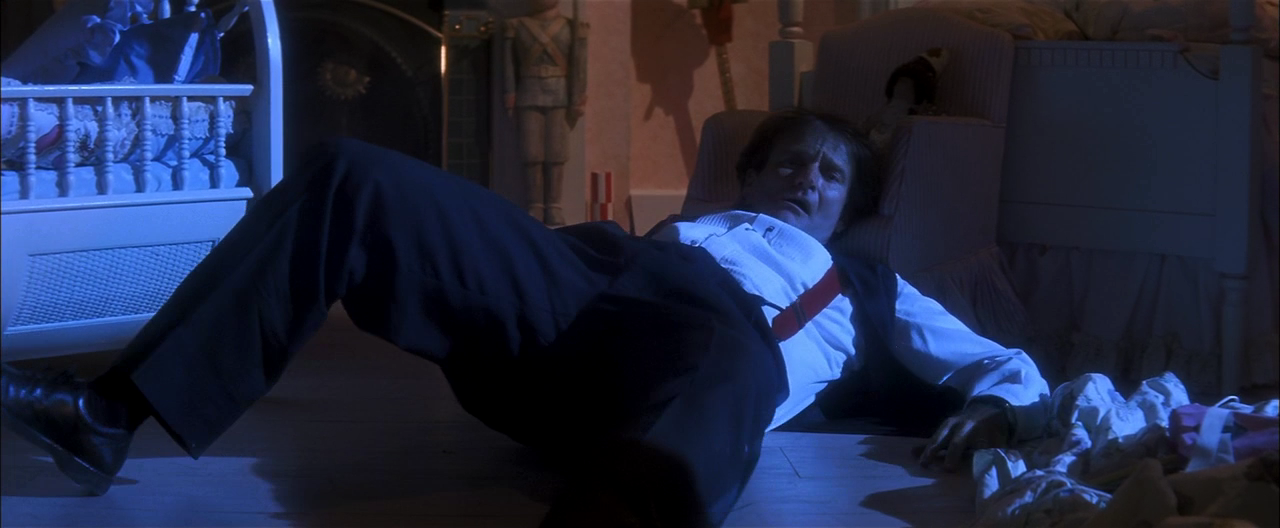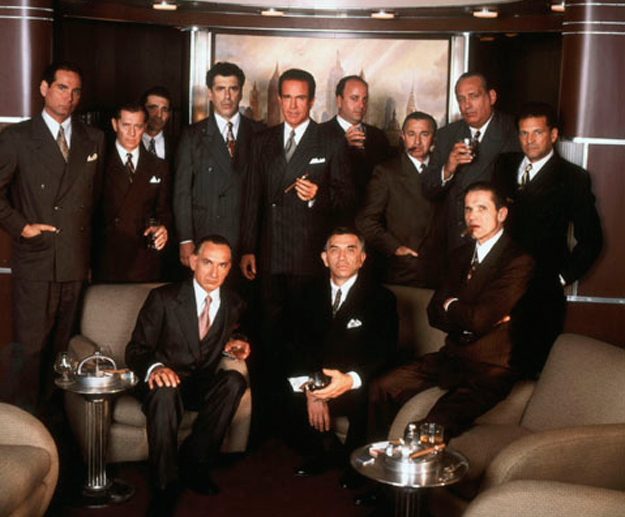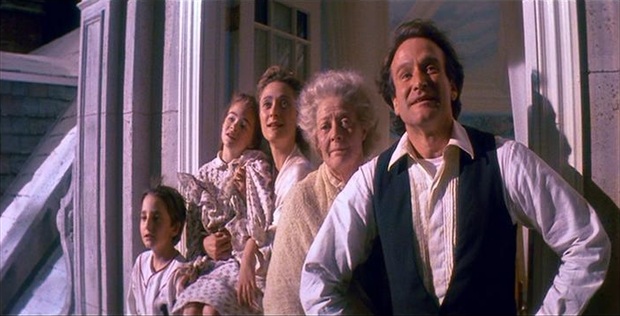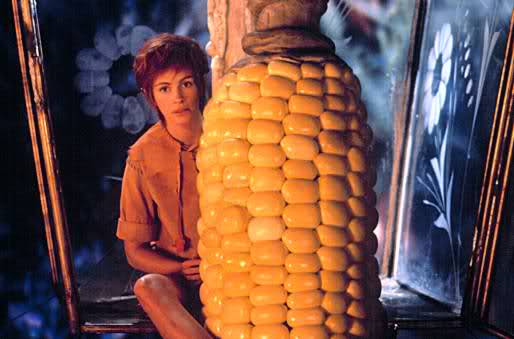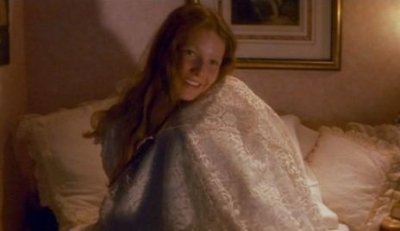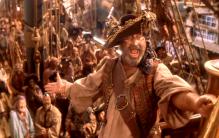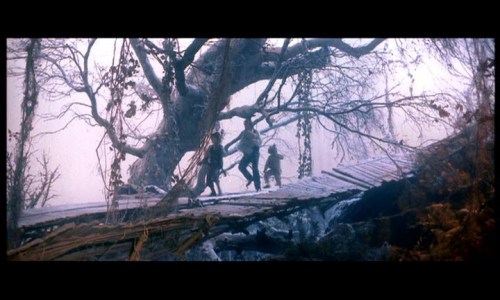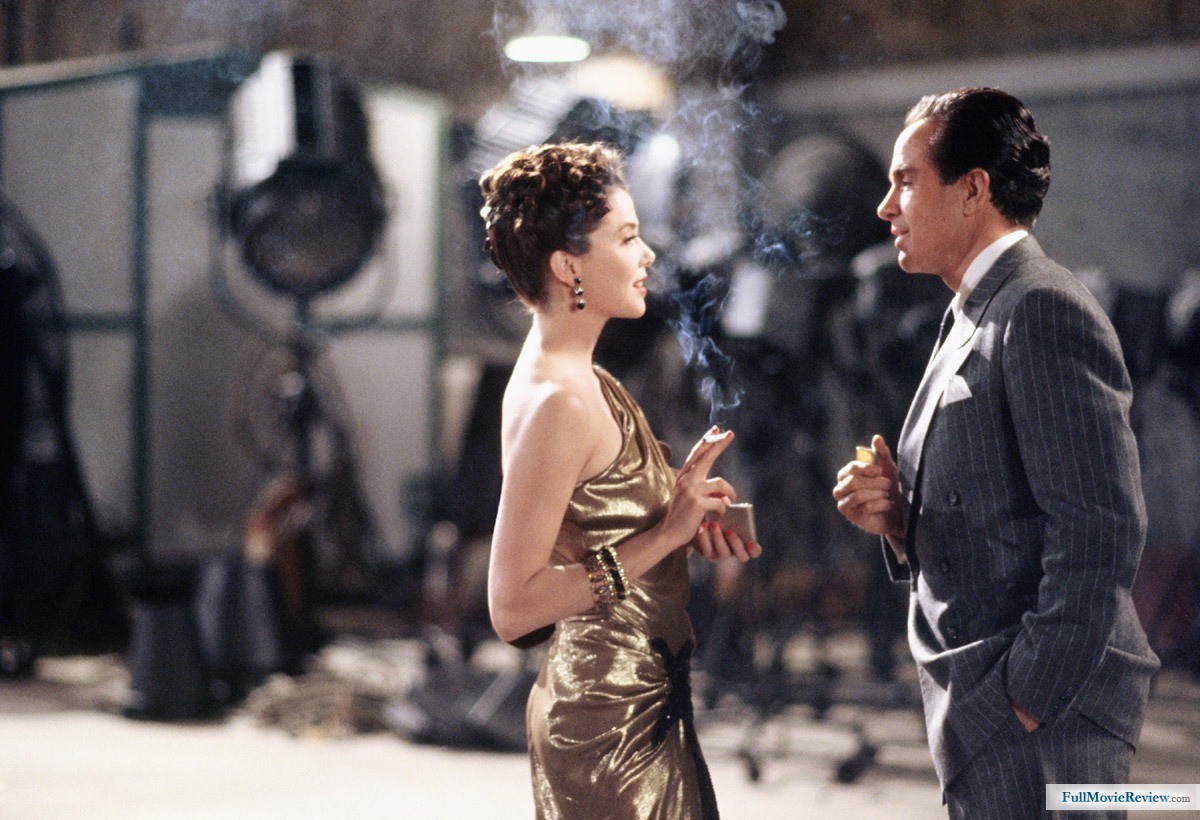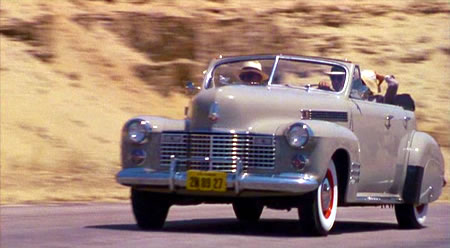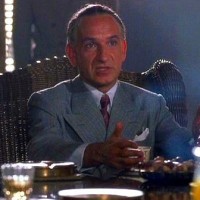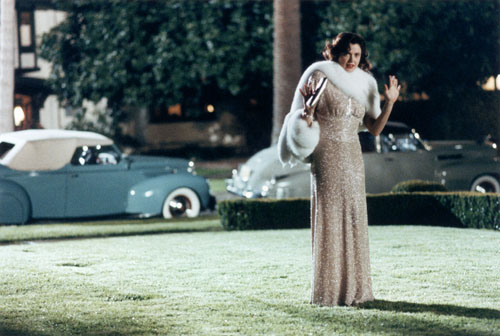From the Chicago Reader (December 20, 1991). — J.R.
HOOK
** (Worth seeing)
Directed by Steven Spielberg
Written by Jim V. Hart, Malia Scotch Marmo, and Nick Castle
With Dustin Hoffman, Robin Williams, Julia Roberts, Bob Hoskins, Maggie Smith, Caroline Goodall, and Charlie Korsmo.
BUGSY
*** (A must-see)
Directed by Barry Levinson
Written by James Toback
With Warren Beatty, Annette Bening, Harvey Keitel, Ben Kingsley, Elliott Gould, Joe Mantegna, and Bebe Neuwirth.
Wistful self-portraits of their respective stars — Steven Spielberg and Warren Beatty, two aging boy wonders lusting after the old magic — Hook and Bugsy are also lengthy meditations on investments, financial as well as spiritual. Coincidentally both projects were conceived seven years ago and have been gestating ever since: Spielberg started planning a straight version of J.M. Barrie’s Peter Pan in 1984, then decided to concoct an updated sequel set in the present, and the same year Beatty commissioned James Toback to write an original screenplay about Bugsy Siegel, which started out as an epic about his entire life and was gradually whittled down to cover only the end of his life in the 1940s. Hook is contrived to move from gloom to joy, while Bugsy charts a slow downward spiral into melancholy; but both movies leave one with a sense of failed purposes — and of an obstinate will to believe that exceeds the meaning or logic of any actual belief.
In Hook this sadness works directly against the film’s clear intention to uplift us with a tale of spiritual regeneration, and it set in only some time after I’d seen the film. Before that I hadn’t been convinced by Spielberg’s story, but I was pretty consistently diverted by the movie’s steady onrush of amusements.
Bugsy, by contrast, is clearly meant to convey an overall sense of loss, even though much of the movie registers as comedy. The only attempt at any final uplift — which is significantly missing from Toback’s published version of the script — is a title that informs us that Bugsy Siegel’s doomed investment in Las Vegas went on to yield billions of dollars after his death, and it’s a credit to the film as a whole that this title, while undoubtedly accurate and perhaps even heartfelt, has a decisively hollow ring. Bugsy is not exactly Citizen Kane, but to be told at the end that Siegel’s beatific vision of vulgarity ultimately triumphed financially is tantamount to concluding Kane, black smoke billowing from Kane’s mansion, with Bernstein’s little apologia: “You take the Spanish-American War. I guess Mr. Leland was right. That was Mr. Kane’s war. We didn’t really have anything to fight about. But do you think if it hadn’t been for that war of Mr. Kane’s we’d have the Panama Canal?”
I still haven’t gotten around to reading J.M. Barrie’s 1911 novel, but I’ve enjoyed Herbert Brenon’s delightful 1924 film version, the crocodile in Disney’s 1953 cartoon feature, and Jean Arthur flying around on invisible wires in the 1950 version on Broadway (less well-known than the production with Mary Martin), which I happened to see at the age of seven. My most vivid memory of the stage version is the moment when the audience members are told that they can only save Tinkerbell from an otherwise certain death by declaring in loud voices that they believe in fairies.
I would have respected Hook more if it had had the courage to retain that risky coup de theatre, even on celluloid; but it’s all too clear that when push comes to shove Spielberg doesn’t believe in fairies, even if he wants to. He creates a harried grown-up Peter Pan (Robin Williams) very much like himself whose imposed duty — which takes up most of the movie’s plot — is to believe in fairies once again so that he can fly and thereby rescue his two kids (Charlie Korsmo and Amber Scott) from the clutches of Captain Hook (Dustin Hoffman). “Say it, Peter,” prompts Julia Roberts’s Tinkerbell, a fairy who ironically seems not so much matted in as faxed in, in an invocation that seems aimed as much at the director as at Peter Pan and the audience: “Say it and mean it.”

It’s equally clear that not even $70 or $80 million can purchase a belief in fairies. If the movie reeks of bad faith from the outset, it’s because the very idea of updating the material betrays serious doubts that Barrie’s original could fly today on its own wings. The movie labors to convince us that the original concept is still relevant, but the labor registers more than the concept itself, and small wonder: Peter Pan reduced to a concept isn’t really Peter Pan anymore but simply a will toward Peter Pan.
Where Spielberg is concerned, however, a will toward Peter Pan is more palatable than a will toward socially conscious art movies (The Color Purple and Empire of the Sun) and romantic confession (Always), both of which were sabotaged by his capricious indifference to place and period, blurring whatever integrity the films’ sources may have had. For obvious reasons Neverland presents fewer problems of this sort, and the minimal use of contemporary settings in the United States and London is inoffensive. Spielberg has little trouble using these backdrops to stage enjoyable miniature recapitulations of some of his earlier and better achievements: the kidnapping of the kids summons up images from Poltergeist; various gags staged around Hook’s ship and the Lost Boys’ playground recall the Rube Goldberg-style slapstick of 1941, complete with tutti-frutti mixtures of splattered paint; even the toppling crocodile statue that winds up “devouring” Hook brings us back to Jaws. I’m sure that with a bit more digging one could find comparable echoes from Close Encounters of the Third Kind, E.T., and the Indiana Jones epics; Spielberg has always delighted in this sort of intertextuality, which he extends even to other people’s movies. (When Williams climactically crows “Seize the day!” it’s an obvious reference to two films he starred in: the 1986 adaptation of Saul Bellow’s novella of that name and Dead Poet’s Society.)
This is not to say that the film doesn’t also abound in some fancy effects of its own — from the gigantic close-ups of Hook’s curling mustache (which overpower Hoffman’s fussy efforts to establish the character) to the long views of his overstuffed ship and cabin, from the intricate theme-park ambience of the Lost Boys’ playground (rendered somewhat surreal by the urban-ethnic Lost Boys cast) to the old-fashioned pictorial splendor of the craggy precipices nearby. Some of the special effects look tatty while others are state-of-the-art, but all combine with the decor to yield a vision of sorts: Spielberg’s Neverland carries undeniable charm and depth. The problems start when we’re asked to accept its two-dimensional residents as anything other than tourists on a forced march through its various nooks and crannies — automatons required to preach and illustrate a thesis about what fun it is to use our imaginations instead of making deals all the time on cellular phones like Peter Pan/Spielberg. Much of this fun may look like work, but you can’t deny that the money is right there on the screen. Indeed, the spiritual investment of this enterprise is so clearly backed by money that the message to forsake capitalist worries for the joy of being a kid again can’t help but seem bogus. Still, the financial investment seems destined to fly.
I’m less certain about the commercial fate of Bugsy, which has the integrity to present itself unfashionably as something of a downer. Screenwriter James Toback has been a pretentious macho clown on most occasions, usually coming on like a baby Norman Mailer, and I haven’t much liked director Barry Levinson since his promising first feature, Diner. But this time, at least, both men have acquitted themselves with some purpose. Toback’s bravado-braggadocio and Levinson’s languorous slickness seem to have found their ideal subject in Bugsy Siegel, a flamboyant borderline psycho who epitomized the commingling of Hollywood and gangsters during the 1940s; together director and writer have provided Warren Beatty with his juiciest part in years, and he takes full advantage of it.
Nobody in this movie is especially likable. Instead the idea is to make most of the characters — big-time Jewish gangsters, some of their women, a few Italian cohorts and Hollywood types — touching despite their ruthlessness and social aberrations, and the project largely succeeds. The moment I saw the hero selecting fancy silk shirts, halfway through the credits, I pegged him as a close cousin to Jay Gatsby, and the movie more or less carries through on this concept. But it’s a Gatsby without a Nick Carraway — that is, without a narrator to serve as moral guide, to tell us what makes this gangster special. Carraway’s function is mainly performed by the dialogue, plot, and Beatty’s performance, which form a kind of romantic halo tinged with the irony and pathos of looking back. We often feel that Siegel is a dangerous lunatic, but we also realize that this lunatic helped forge a significant part of the mainstream entertainment business today. The movie doesn’t entirely endorse that history, but it does ask us to put it in our pipe and smoke it.
The plot is fairly simple, but it has bite. Circa 1941 Siegel, a gangster from Brooklyn with links to Meyer Lansky (Ben Kingsley) and Lucky Luciano (Bill Graham), deposits his wife and two young daughters in Scarsdale before heading for Los Angeles to knock out Jack Dragna (Richard Sarafian) and take over the rackets in Southern California. Greeted upon arrival by his childhood pal George Raft (Joe Mantegna), he quickly falls for Virginia Hill (Annette Bening), a feisty extra he meets on the set of Raft’s picture, Manpower. Siegel becomes so enamored of Hollywood that he takes a screen test and decides to settle in. He hires local mobster Mickey Cohen (Harvey Keitel); eventually wrests Hill away from another gangster, making vague promises to divorce his wife; plots to assassinate Mussolini; and in the mid-40s hatches a dream to build a grand hotel, the Flamingo (Virginia’s nickname), in a hick town called Las Vegas, where gambling is legal . . .
Siegel’s status as a Hollywood prototype isn’t lost on the filmmakers. Siegel’s Flamingo is originally budgeted at a million dollars, but because of his fanaticism it winds up costing the investors six times as much. His extreme methods of clinching deals call to mind some legendary techniques subsequently employed by such diverse figures as Harry Cohn, John Milius, and Barbet Schroeder to get certain pictures made. In the midst of beating and kicking his mistress’s former boyfriend to a pulp, Siegel pauses briefly to adjust his hair in a mirror; and over the course of one extended farcical scene set in his Scarsdale home he attempts to hold a birthday party for his youngest daughter, keep tabs on his flighty girlfriend’s whereabouts by phone, and sell his Flamingo scheme to five other crooks gathered in his living room. Significantly, he can’t bear to be called Bugsy, insisting on his given name, Benjamin — which seems both paradoxical and apt given his role as the virtual inventor of the “classy” vulgarity of the Las Vegas floor show.
Continuity in this dreamy saga is partially provided by a few well-chosen Gatsby-like motifs and devices: the nonsensical line Siegel repeats (“Twenty dwarfs took turns doing handstands on the carpet”) to improve his elocution, the frequent home projection of his awkward screen test, a grimly elegiac Ennio Morricone score that functions a bit like the lovesick glitter of Fitzgerald’s prose.
Beatty, a specialist in doomed romantics (Splendor in the Grass, Bonnie and Clyde, McCabe and Mrs. Miller, Shampoo, Reds), manages to make his Bugsy Siegel compatible with the other misfits while adding some filigree to the overall design, suggesting at times a jaundiced self-portrait: a knuckleheaded overreacher who is crippled as well as empowered by his own rages and obsessions. There’s still plenty of narcissism involved in this autocritique. His underreaching Dick Tracy sliced his leading lady, Madonna, into brutal mincemeat sound bites for the sake of lingering Beatty close-ups. Bugsy, supposedly a love story, is often comparably discourteous to his costar and current girlfriend, Bening. (Admittedly Beatty is not the director here, but one often feels his presence on the other side of the camera.) It might be argued in Beatty’s defense that he and Siegel share the special status of movie stars: from that standpoint, such behavior goes with the territory.



